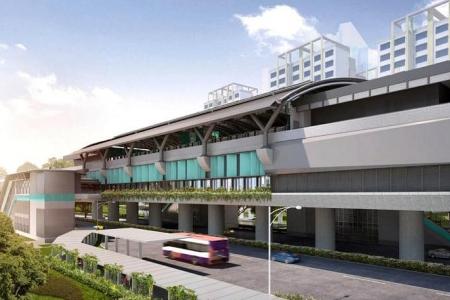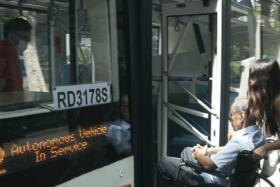Improved MRT stations, tree-planting in bid to reduce carbon footprint
The designs of MRT stations on the Jurong Region and Cross Island lines are being reviewed to use fewer materials and lower the carbon footprint of these buildings.
For the Jurong Region Line (JRL) which will open in phases from 2027, the target is to cut the amount of architectural finishes such as cladding and ceilings by 10 per cent, said the Land Transport Authority (LTA).
LTA also aims to reduce the number of ceiling panels in stations on the second and third phases of the Cross Island Line (CRL) by 25 per cent, as well as increase the adoption of alternative green materials. These stations will become operational from the 2030s.
The design review was among the plans outlined in the LTA’s first sustainability report released on Dec 7.
The report, which will be published annually, sets out the initiatives to reduce Singapore’s carbon footprint in terms of land transport – from electrifying the vehicle population to expanding the rail and cycling networks.
LTA said it has required contractors to use low-carbon concrete for CRL phase two projects and footpath renewal contracts. The aim is to cut carbon emissions by at least 20 per cent compared with using conventional concrete. Low-carbon concrete uses recycled or waste materials instead of cement.
On the North-South Corridor, about 16,000 trees will be planted to replace those that cannot be transplanted when building the 21.5km expressway, which will be completed in phases from 2027. The streets above the underground road tunnels will have dedicated cycling paths and bus lanes, as well as wider footpaths.
The report also highlighted other milestones, such as the opening of Thomson-East Coast Line phase three, which added 13.2km to the rail network and connected passengers to Gardens by the Bay.
In terms of electric vehicle (EV) adoption, such vehicles accounted for 11.8 per cent of new car registrations as of December 2022, up from 0.2 per cent in 2020. In August 2023, EVs made up 23 per cent of all new car registrations.
Solar photovoltaic systems will be fitted on the roofs of land transport infrastructure such as rail and bus depots where possible, said LTA.
Work is under way to install fans along with air-conditioning systems in the fourth and fifth phases of the Thomson-East Coast Line and the sixth stage of the Circle Line, among other projects. This arrangement is expected to allow for higher air-conditioner temperature to lower energy consumption, without making it uncomfortable for commuters.
LTA chairman Alan Chan said initiatives such as getting more people to use public transport and controlling Singapore’s vehicle population have helped to reduce land transport emissions down from the peak level seen in 2016. Land transport is ranked as the third-largest carbon emitter after the energy and industry sectors.
“Nevertheless, robust action is needed to support Singapore’s net-zero ambitions for 2050, in particular, increasing Walk-Cycle-Ride and vehicle electrification,” he said in the report.
Get The New Paper on your phone with the free TNP app. Download from the Apple App Store or Google Play Store now


